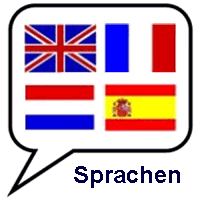Die Position des Verbs im Deutschen — The position of the verb in German
English is a SVO language
In English the sentence structure is almost always subject–verb–object (SVO):
German is a V2 language
In contrast to this, German is a V2 language. This means that the verb in German is almost always in the second position of the sentence.
In simple German sentences the SVO pattern is used as well:
But in German the SVO pattern is only one of several possible and valid sentence structures. German has a free word order, which means that the subject and the object can change their positions, in order to emphasize the object.
If you ask "Where do you go?" in English, you usually have to answer "I go to school" or "I go home" (subject–verb–object).
If you ask "Wohin gehst du?" in German, you could either answer "Ich gehe zur Schule" or "Ich gehe nach Hause", like in English.
But if you want to emphasize where you go, you can as well answer "Zur Schule gehe ich" or "Nach Hause gehe ich", respectively. In this case the emphasized object is in the first position now and the subject in the third, but the verb remains in the second position, due to the V2 word order.
Adverbial phrases can change the word order in German
If you add the adverbial phrase "today" to the basic sentence, you usually say either "I go to school today" or "Today, I go to school" in English. In both cases the SVO sentence structure is used.
In German you can either say "Ich gehe heute zur Schule" or "Heute gehe ich zur Schule". The meaning is the same as in the corresponding English sentences. But in both cases the V2 sentence structure is preserved in German. If you put the adverbial phrase "heute" at the beginning of the sentence, the subject has to go to the third position, in order to keep the verb in the second position.
Auxiliary verbs / verbal brackets
In sentences with an auxiliary verb and a main verb, the SVO word order is still used in English:
In English, the auxiliary verb and the main verb are put directly behind each other at their usual SVO position.
In contrast to this, sentences with an auxiliary verb and a main verb form a verbal bracket (Satzklammer) in German. The auxiliary verb is still in the second position, whereas the main verb is put to the very end of the sentence. Both verbs enclose the rest of the sentence, therefore it is called a "verbal bracket".
Summary
In practice it is far easier than you might expect. It can be summarized in only two rules:
- In sentences with one verb the verb is located in the second position (V2).
- In sentences with two verbs the first verb is in the second position and the second verb is located at the end of the sentence (verbal bracket).
See also
Instruction videos
- Verbal bracket (end of sentence verbs) – (rewboss)


